Flight Cages
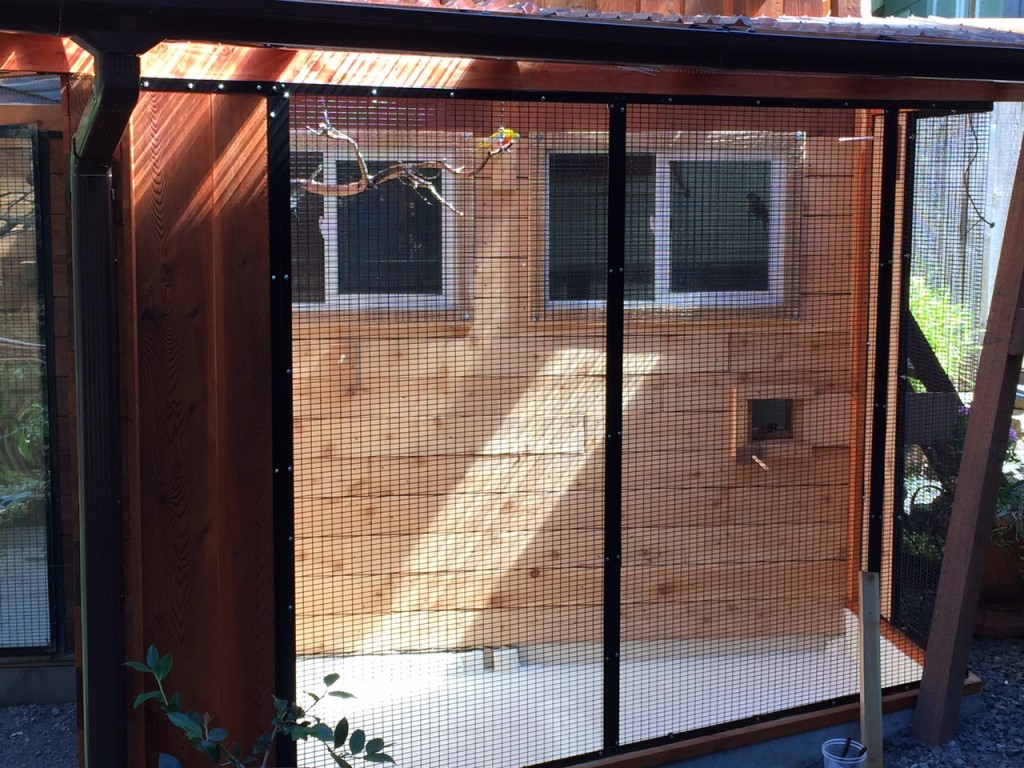
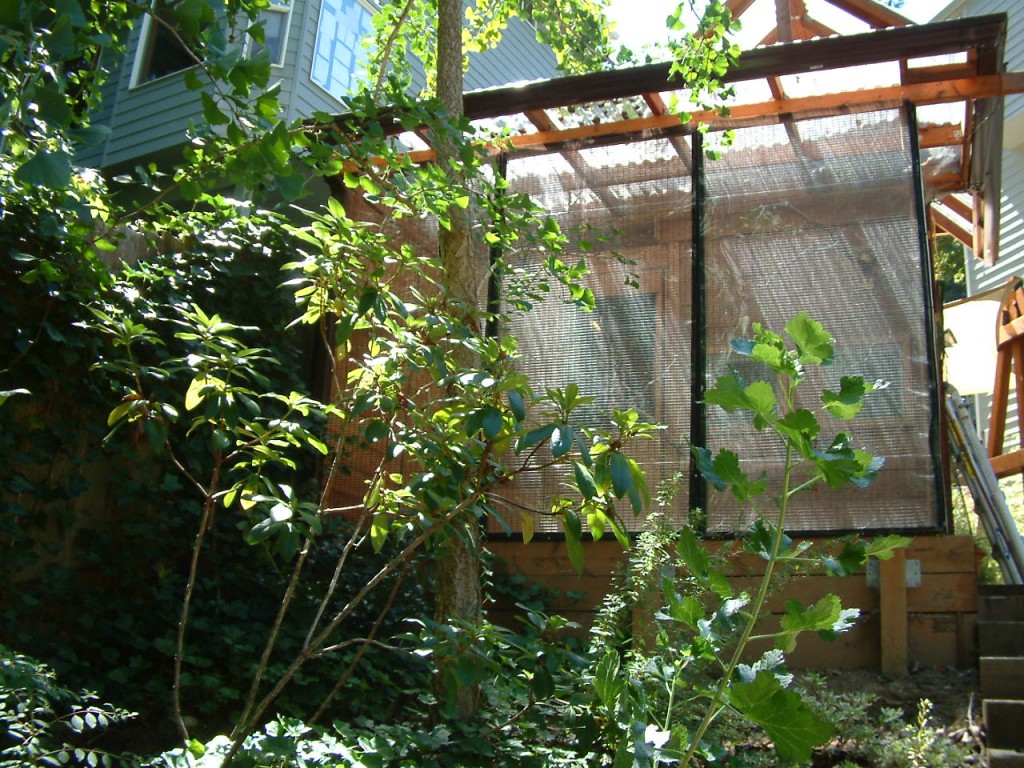
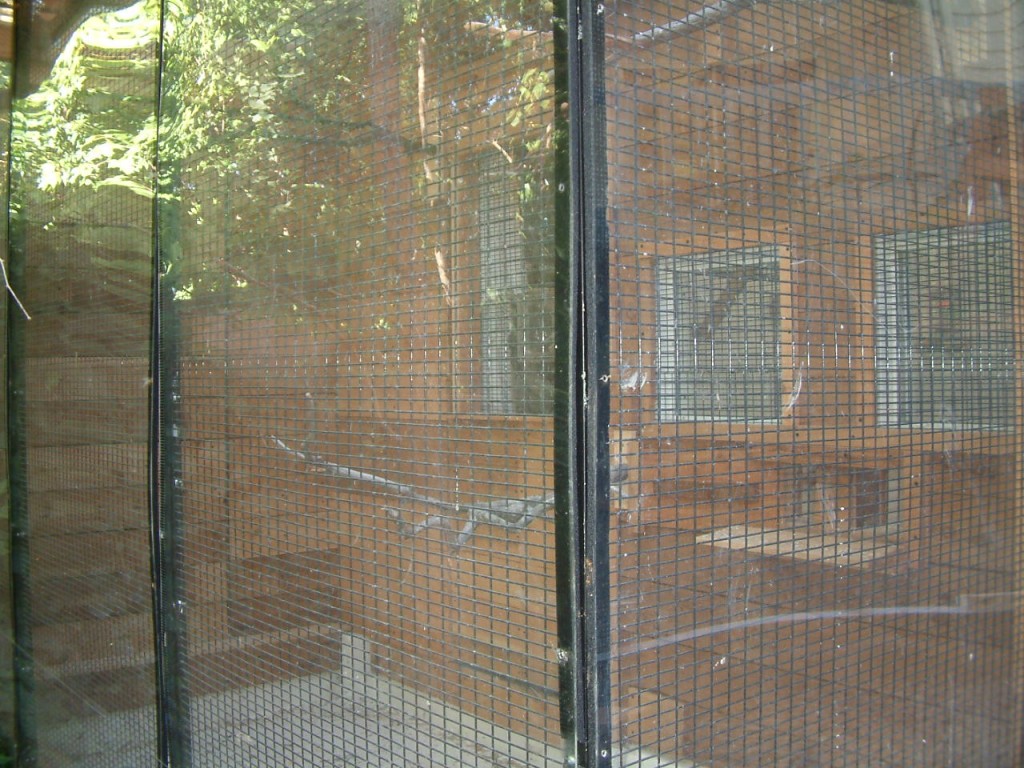
Most of the year, our birds can enjoy larger outdoor flights, approximately 9 feet long, 8 feet tall and 5 feet wide. We have experimented with different floor substrates, including gravel, rock, sand, etc., but none of them can provide the flexibility and ease of maintenance and cleaning as concrete flooring. We don’t keep any vegetation in our aviaries but we offer fresh willow, maple and conifer (Douglas-fir) branches to our birds regularly.
The walls of the flights are made of ½” x 1″ wire. The floor is made of painted concrete with a drain for easy cleaning. We use plexiglass panels over the entire flight to reduce draft and to protect the birds from predators. The birds have access to the outside flights (from their night house) throughout the year with the exception of periods of prolonged rainy winter weather.
Night House
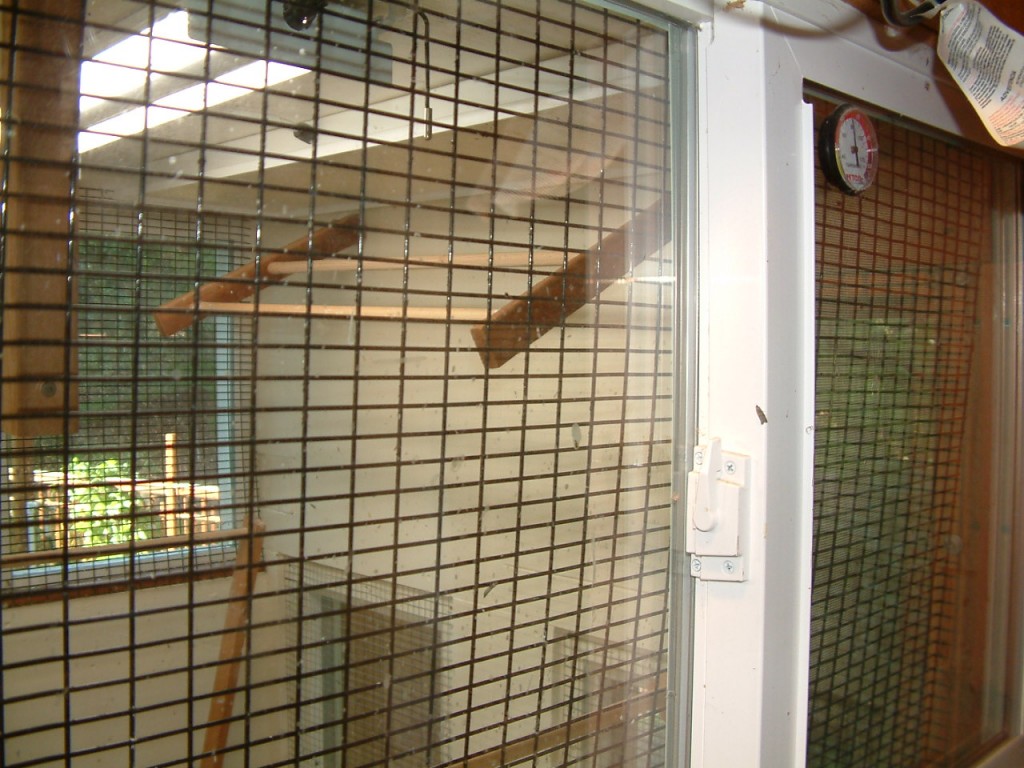
Each flight has an adjacent “night house” (measuring ~ 4 x 4 x 6 feet) attached to it and the birds are free to move between indoor and outdoor quarters as they please. The night house is equipped with a full spectrum lighting source and an infrared heater (“Sweeter Heater” by Infratherm, Inc.), connected to a timer and a thermostat, that provide supplemental lighting and heating during winter months.
We keep hens and cocks in separate flights and night houses and pair up selected pairs before each breeding season. This system of housing and breeding seems to work really well. We typically see eggs in nest boxes within 1-2 weeks after pairing up the birds.
Breeding Cages
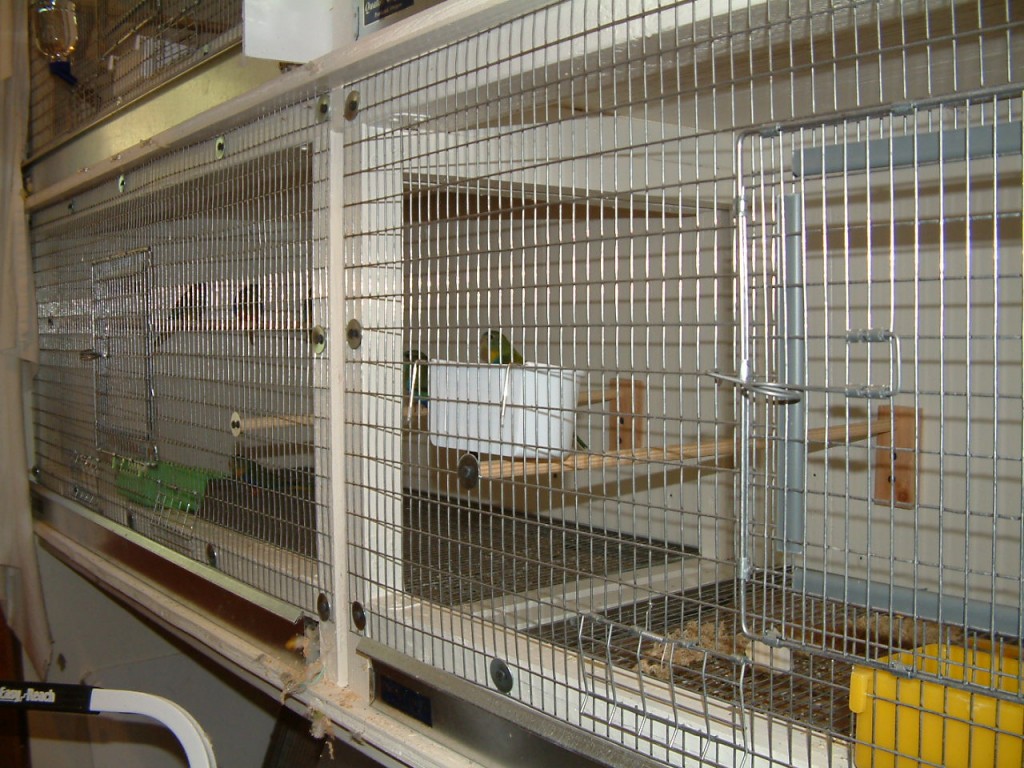
We currently breed individual pairs in cages measuring 2 x 2 x 4 or 8 feet long. These are European style box cages with front panels made of ½” x 1″ wire. A divider separates two adjacent breeding cages, which allows us to combine two cages into a 8-foot long flight cage to temporarily house weaned offspring or new aviary arrivals.
All birds are housed in breeding cages only during the breeding season. Once the birds are done nesting, we separate hens and cocks and move them back into their respective flights to enjoy the rest of the summer and to overwinter. The relatively small size of our breeding cages does not seem to hamper the breeding enthusiasm of our birds. The pair is typically very active and flighty during the first few days after pairing up but once the hen starts sitting in the box, the cock calms down and spends most of his time guarding (sitting) and feeding the hen.
Cage Floors
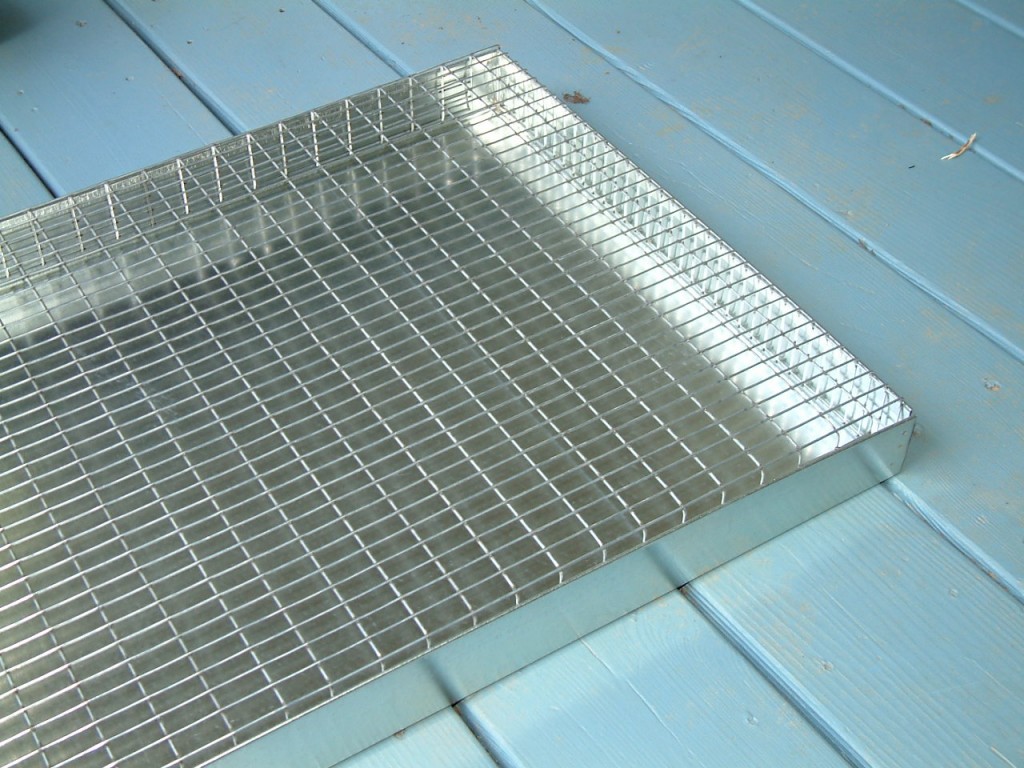
With the exception of our outdoor flights, where the floors are made of painted concrete, all of our breeding and flight cages, as well as night house quarters, are equipped with trays with drop-in-grids, which facilitates cleaning and is critical to maintaining sanitary cage floor conditions, and ultimately healthy birds. The trays are lined with utility paper and the discarded content is composted after each cleaning.
We use and recommend Quality Cage Company (Portland, OR) for custom-design aviary jobs. All of our front cage panels, trays and drop-in-grids have been built by this company and we’ve been very happy with the quality over the years.
Breeding

Our breeding cages are located in an unheated room that is adjacent to our flight cages. The natural light in this area is supplemented as needed with artificial lighting controlled with a timer. Our current capacity is 10-12 breeding cages/pairs.
We typically breed our birds between May and September, with chicks hatching in June (1st clutch) and August (2nd clutch). We allow a maximum of two clutches per season. Each pair is separated after the second clutch.
Breeding Boxes
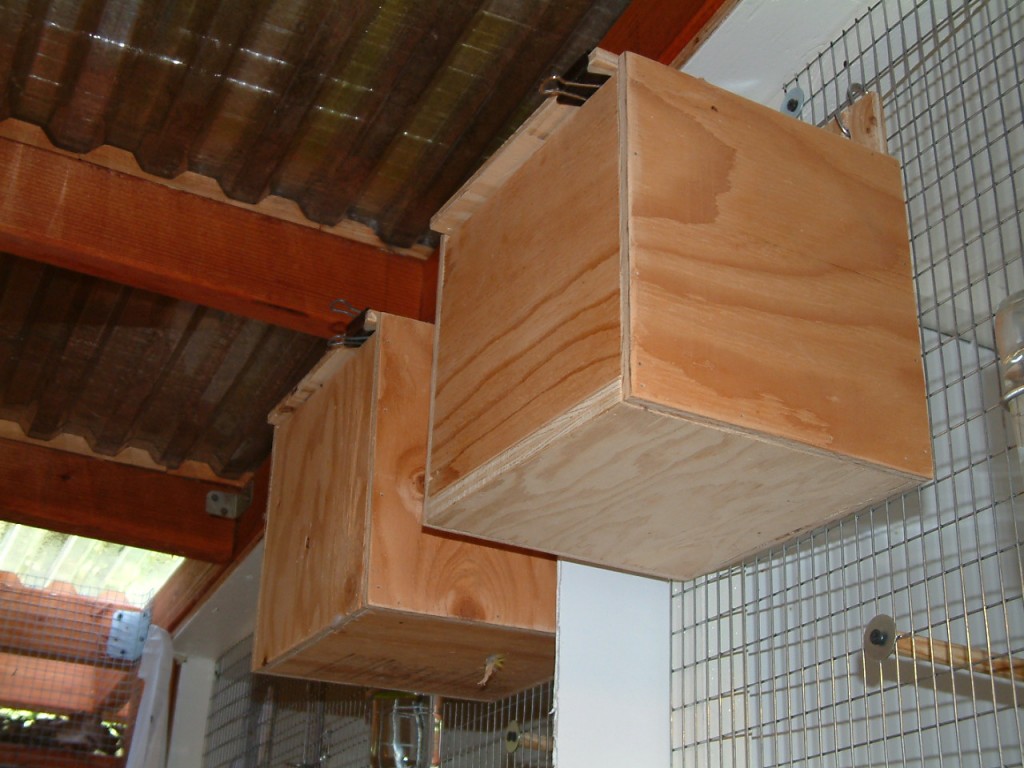
Neophema parakeets are not very picky about the particulars of their breeding boxes. We have achieved great breeding results with parakeet/loverbird-sized boxes (8″w x 8″d x 8″h, with a 2″ diameter hole) commercially available in most pet stores or built at home. We use wood shavings to cover the floor of the box. Individual hens have different preference as to the amount of shavings in their box and some will remove considerable amounts before settling down.
Starting with our 2016 breeding season, we have been experimenting with a modified design of Neophema breeding cages used by Colin O’Hara in the UK. These new breeding boxes have been constructed with the assistance of a local woodworking enthusiast and guru, David Thomson of Timber Trappings.
Bird Banding
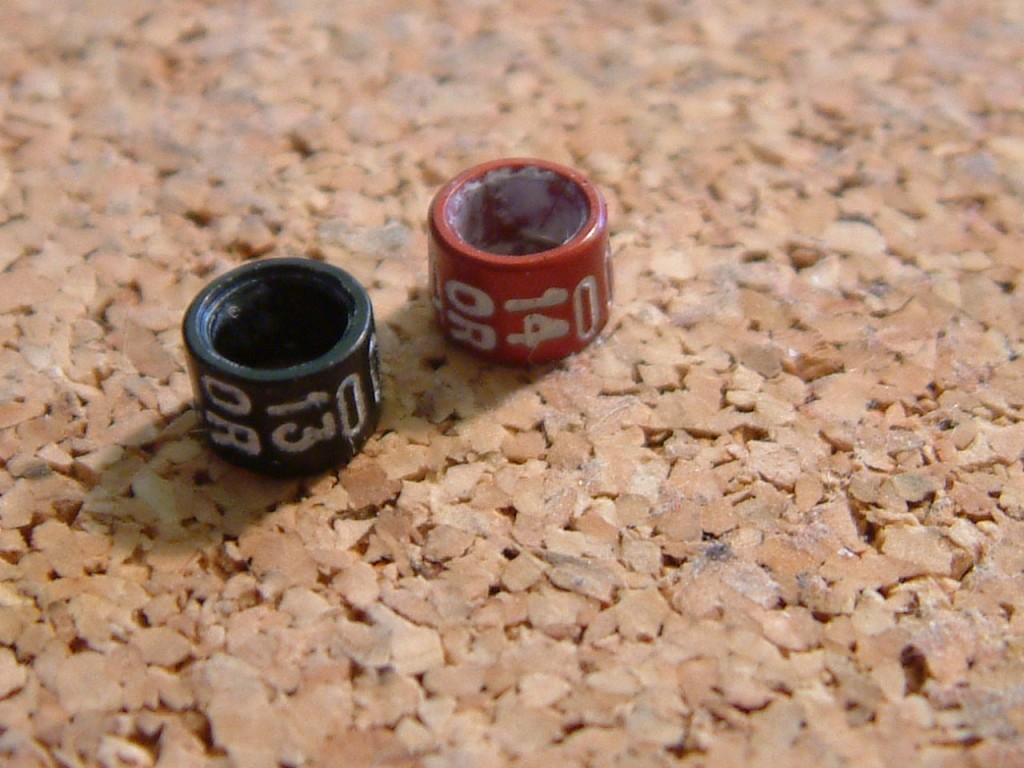
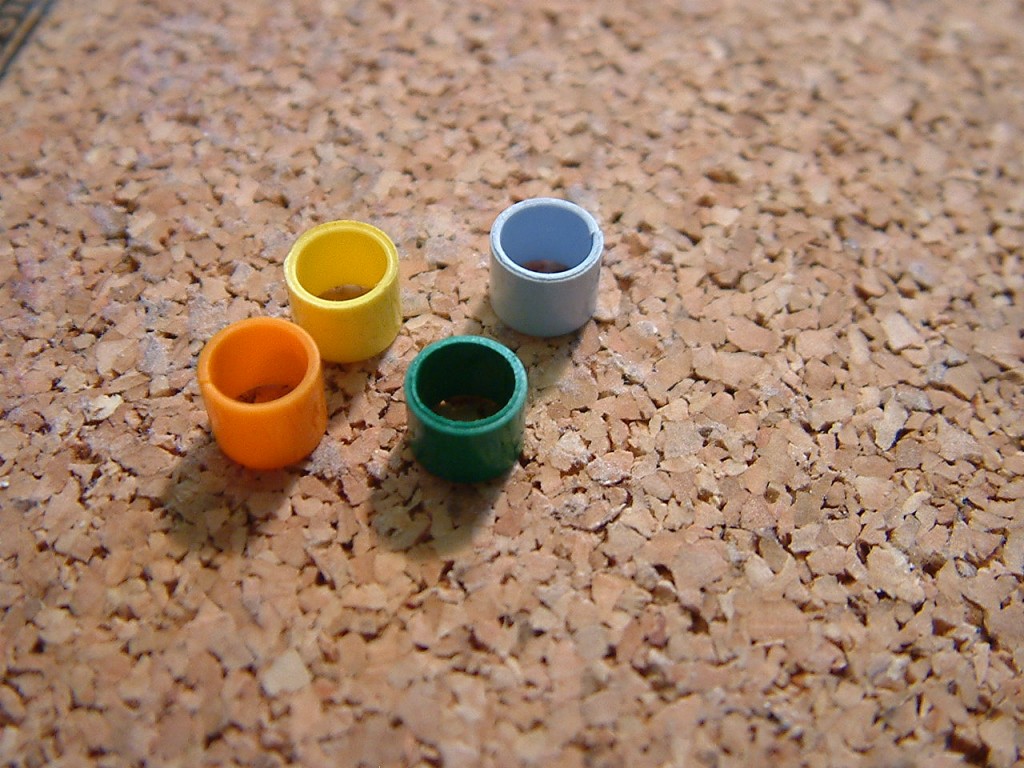
All of our birds are closed-banded at the age of 7-10 days. Each band is imprinted with a unique ID number, which includes the name of our aviary, state, hatch year and the bird number, which is a consecutive number that never repeats itself. Additionally, the color of the closed band changes every year, which further facilitates tracking the unique IDs of our birds. We use parakeet-size bands (9/64″ or 3.4 mm) from L&M Bird Leg Bands, Inc.
Upon weaning, and leaving the breeding cage, our youngsters also receive an open plastic band that identifies their bloodline.
Baby Flights
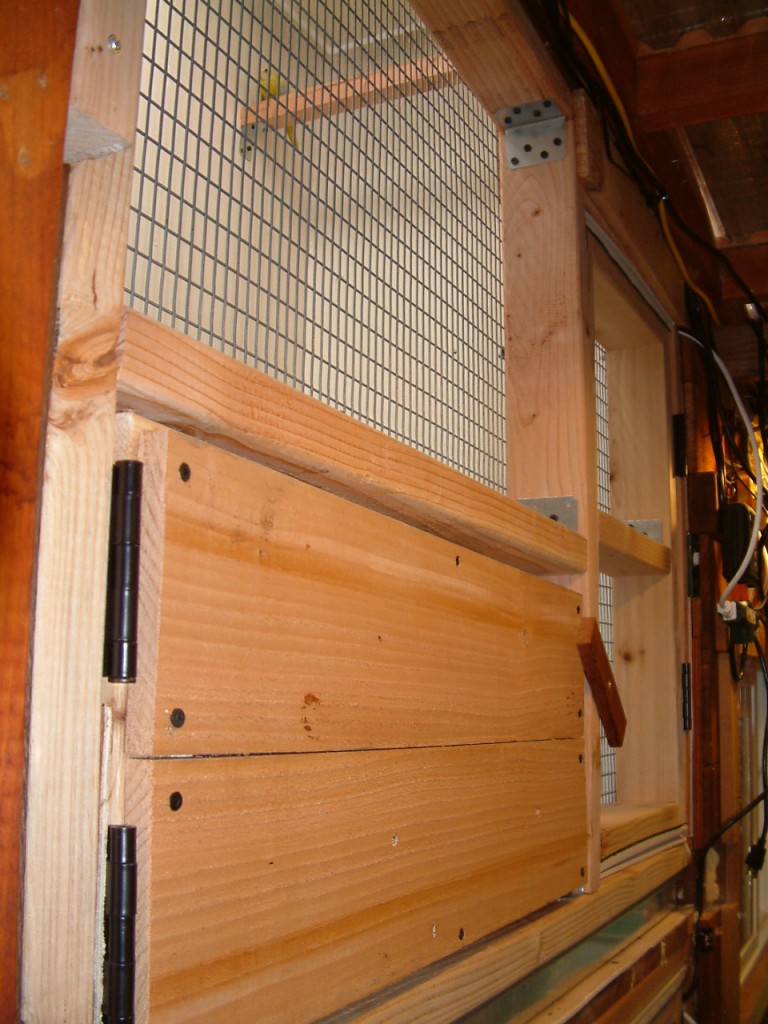
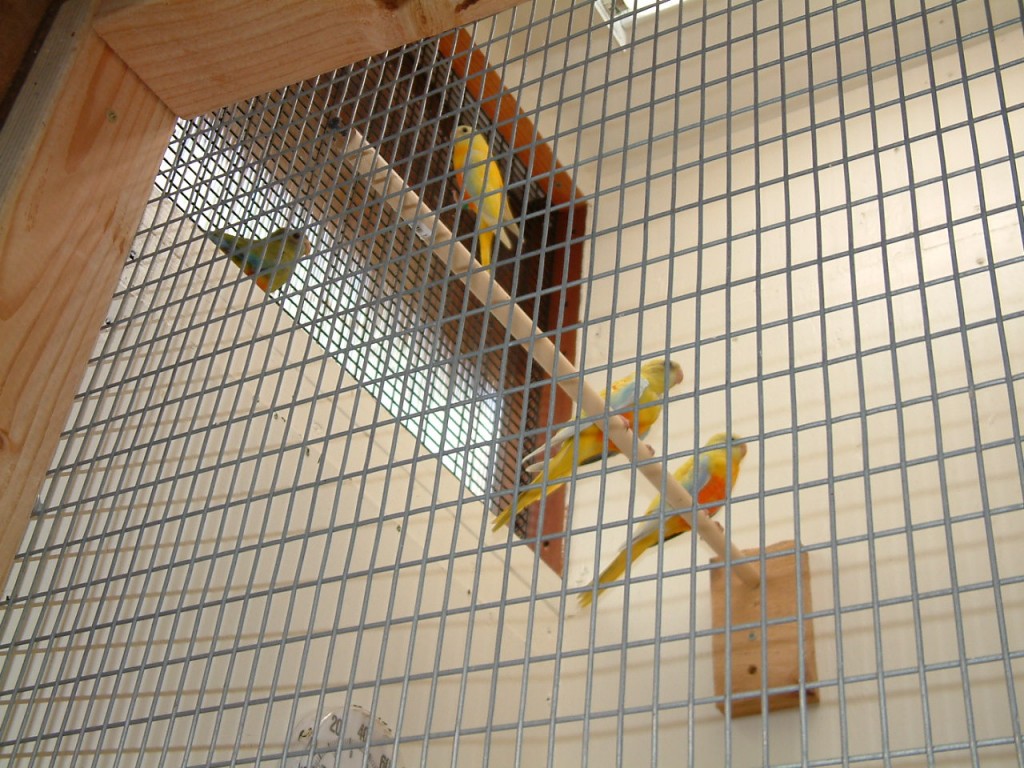
Weaned youngsters are held temporarily in baby flights to go through their first molt. Hens and cocks are then separated in the fall and placed in their respective housing quarters.
Food
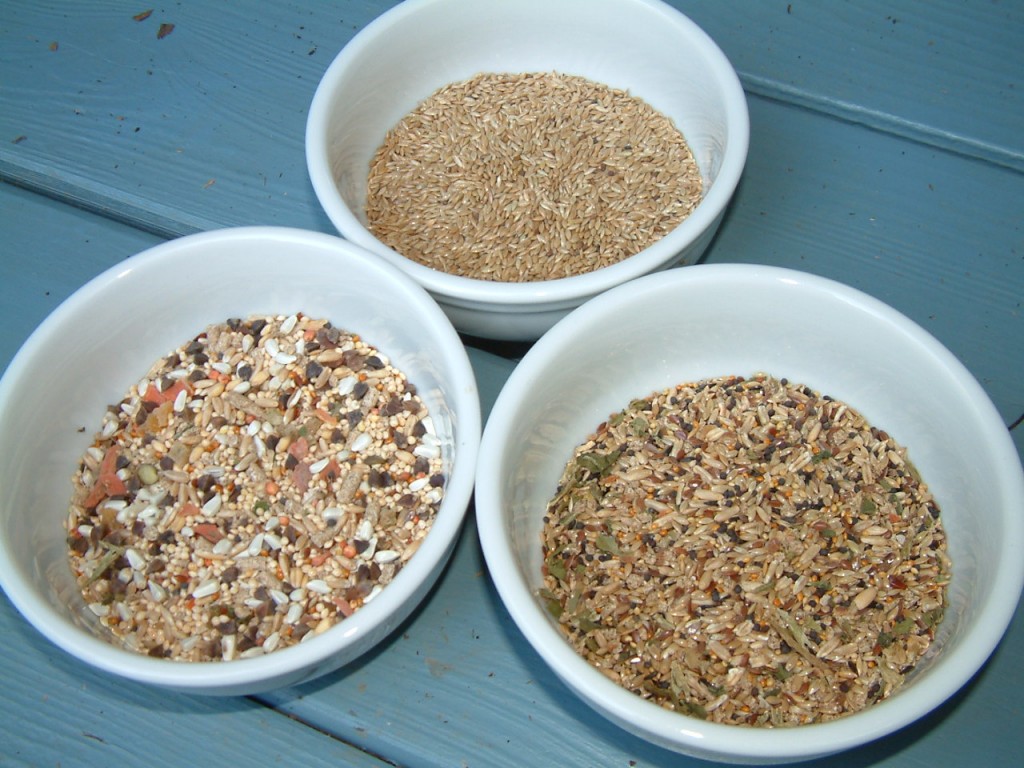
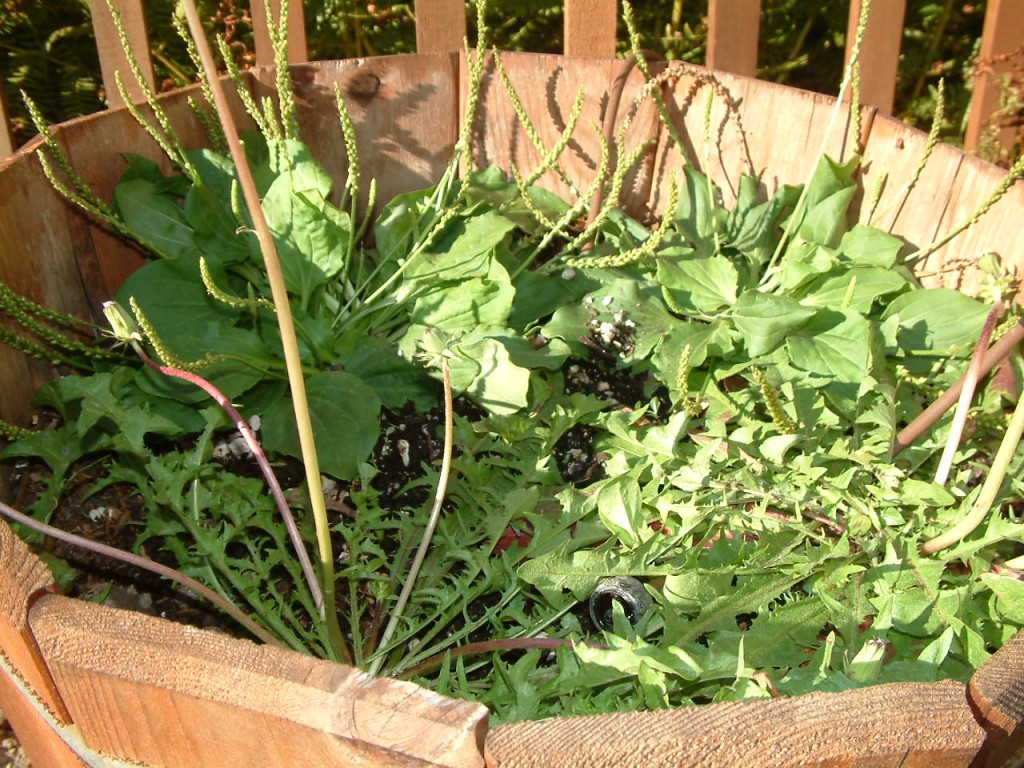
The basic diet of our birds includes a variety of high quality seed mixes. We have used different products over the year but we like a local “Sleek & Sassy” brand the best. We currently use Sleek & Sassy Garden Small Hookbill, Garden Budgie (Parakeet) and Garden Finch Bird Food, all without sunflower seed, to which we add plain canary seed and offer these ad lib daily. We also offer spray millet and Niger (thistle) seed regularly.
The birds have access to clean water, cuttlebone and mineral grid daily. We also offer a variety of fruit, vegetables, weeds and green grass seeds on a regular basis. During the breeding season, we also offer fresh and dry egg food diets.
